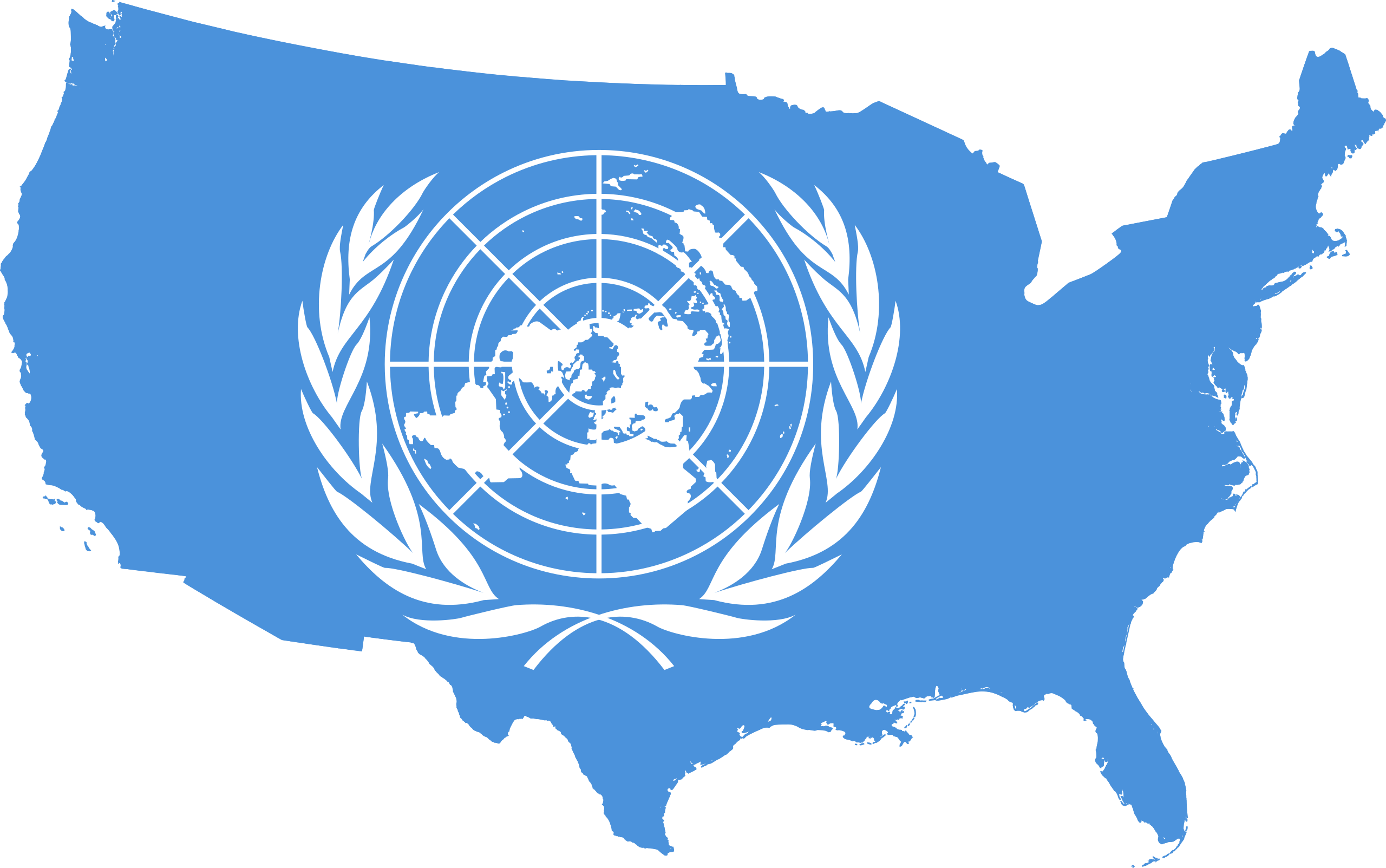Low-Energy Fridays: Should we stay in the UN’s Climate Convention? – R Street Institute

Analysis of United States Participation in the UNFCCC and its Alignment with Sustainable Development Goals
Introduction
This report examines the strategic implications of the United States’ continued participation in the United Nations Framework Convention on Climate Change (UNFCCC). The analysis evaluates arguments for and against withdrawal, with significant emphasis on the alignment of these positions with the United Nations’ Sustainable Development Goals (SDGs), particularly SDG 13 (Climate Action), SDG 16 (Peace, Justice, and Strong Institutions), and SDG 17 (Partnerships for the Goals).
The Case for Withdrawal: Institutional Skepticism and National Sovereignty
Challenges to SDG 16: Peace, Justice, and Strong Institutions
Arguments in favor of withdrawing from the UNFCCC are often rooted in a growing skepticism of global institutions, a key component of SDG 16. Proponents of withdrawal point to perceived failures and external influences within international bodies, such as the World Health Organization’s handling of the COVID-19 pandemic, as evidence of diminished institutional credibility. This perspective suggests that disengagement is necessary to protect national sovereignty from potentially flawed or biased global governance structures.
Concerns Over Domestic Governance and Treaty Ratification
A primary driver for the withdrawal argument is the concern that UNFCCC participation enables executive overreach, circumventing established legislative processes for treaty ratification. The method of entry into the Paris Agreement is cited as a key example. From this viewpoint, withdrawing from the UNFCCC framework entirely is seen as the only definitive measure to prevent future administrations from using international agreements to justify domestic regulations without proper congressional approval, thereby upholding the integrity of national institutions as outlined in SDG 16.
The Case for Continued Engagement: Upholding Global Partnerships and Economic Interests
The Imperative of SDG 17: Partnerships for the Goals
A compelling argument for remaining within the UNFCCC is its direct alignment with SDG 17, which emphasizes the need for global partnerships to achieve sustainable development. The UNFCCC is the principal international body for negotiating actions to address climate change. Continued U.S. participation is essential for:
- Shaping global climate policy in line with national interests.
- Contributing to a robust and effective international framework for achieving SDG 13 (Climate Action).
- Maintaining a leadership role in global governance and multilateral cooperation.
Economic Implications for SDG 8 and SDG 9
Withdrawal from the UNFCCC poses significant risks to U.S. economic interests, impacting SDG 8 (Decent Work and Economic Growth) and SDG 9 (Industry, Innovation, and Infrastructure). Even if the United States is not a party to future climate treaties, its industries will be affected.
- Regulatory Exposure: U.S. companies operating in or exporting to nations that comply with UNFCCC-negotiated treaties will face compliance burdens, such as the European Union’s emissions disclosure and reporting requirements for importers.
- Lack of Representation: Without a presence in negotiations, U.S. corporate and industrial interests would be unrepresented as the rest of the world establishes new standards and regulations, creating a potential competitive disadvantage.
Strategic Influence on Climate Action (SDG 13)
Continued engagement ensures the United States retains a voice in shaping the global response to climate change. While past representation may be viewed as imperfect, it is strategically preferable to having no influence at all. Participation allows the U.S. to advocate for its interests, promote pragmatic solutions, and counter proposals that could disproportionately burden the nation. This direct involvement is critical for steering global efforts under SDG 13 in a manner that is both effective and equitable.
Conclusion and Strategic Recommendations
An analysis based on game theory and the framework of the Sustainable Development Goals indicates that the risks of withdrawing from the UNFCCC outweigh the potential benefits. The challenges posed by the Paris Agreement are more indicative of issues related to domestic executive power than a fundamental flaw in international participation.
- Uphold SDG 17: Continued participation in the UNFCCC is the most effective strategy for advancing global partnerships and influencing international policy on climate change (SDG 13).
- Mitigate Economic Risk: Remaining engaged protects U.S. economic interests (SDG 8, SDG 9) by ensuring representation for American industries in the formation of global climate and trade regulations.
- Strengthen Domestic Institutions (SDG 16): The appropriate remedy for concerns about executive overreach is not withdrawal from international forums, but rather the strengthening of congressional oversight and the assertion of its constitutional role in treaty ratification.
- Cost-Benefit Analysis: The cost of remaining engaged in the UNFCCC is minimal, while the potential economic and geopolitical costs of withdrawal are substantial. Letting other nations shape the global agenda without U.S. input is a significant strategic risk.
SDGs Addressed in the Article
SDG 13: Climate Action
- The entire article revolves around the international framework for addressing climate change. It explicitly mentions the “Conference of the Parties (COP),” the “United Nations Framework Convention on Climate Change (UNFCCC),” and the “Paris Agreement,” all of which are central to global efforts to combat climate change and its impacts. The core debate discussed is the United States’ role and strategy within these climate-focused bodies.
SDG 17: Partnerships for the Goals
- The article’s central argument is about the value of international cooperation and participation in global governance structures. It debates the pros and cons of the U.S. withdrawing from the UNFCCC, framing the issue as one of maintaining influence through partnership versus isolation. The text emphasizes that “having a voice in those negotiations is too important to give up,” which directly relates to the principle of strengthening global partnerships for sustainable development.
Specific Targets Identified
Targets under SDG 13: Climate Action
-
Target 13.2: Integrate climate change measures into national policies, strategies and planning.
The article discusses how international agreements like the Paris Agreement could be used by a U.S. administration “to justify domestic regulations.” This highlights the direct link between international climate commitments and the integration of climate measures into national policy, which is the focus of this target.
-
Target 13.a: Implement the commitment undertaken by developed-country parties to the United Nations Framework Convention on Climate Change.
This target is directly addressed as the article’s main subject is the UNFCCC itself. The entire piece is a commentary on the United States’ participation and commitment to this specific international convention, debating whether the U.S. should “remain part of the United Nations Framework Convention on Climate Change (UNFCCC).”
Targets under SDG 17: Partnerships for the Goals
-
Target 17.14: Enhance policy coherence for sustainable development.
The article explores the tension between international agreements and domestic politics, such as when President Obama “circumvented the normal procedure for participation in the PA to avoid requiring approval from the then-Republican-controlled Senate.” This debate over how international commitments align with national legislative processes is a core challenge of achieving policy coherence.
-
Target 17.16: Enhance the global partnership for sustainable development, complemented by multi-stakeholder partnerships that mobilize and share knowledge, expertise, technology and financial resources, to support the achievement of the sustainable development goals in all countries, in particular developing countries.
The argument for “continued participation in the UNFCCC” is a direct endorsement of this target. The author posits that even with disagreements, it is better to remain engaged in the global partnership to represent national interests, stating, “There is still value in having agents who represent U.S. interests poorly as opposed to no representation at all.”
Indicators Mentioned or Implied
Indicators for SDG 13: Climate Action
- Participation in international climate agreements: The article uses U.S. participation in the UNFCCC and the Paris Agreement as a primary measure of its engagement in global climate action. The act of entering, withdrawing, or remaining in these treaties serves as a key qualitative indicator of the nation’s commitment.
- Compliance with emission reporting requirements: The article provides a concrete example of a measurement mechanism by mentioning that the European Union “is ramping up disclosure and reporting requirements for importers.” These “E.U. emission reporting requirements” for products like natural gas function as a specific, measurable indicator of climate-related performance in international trade.
Indicators for SDG 17: Partnerships for the Goals
- Membership and engagement in international frameworks: The primary indicator for this goal, as discussed in the article, is the United States’ formal membership in the UNFCCC. The author argues that “game theory calculus favors continued participation in the UNFCCC,” framing membership itself as a crucial indicator of commitment to global partnership.
- Representation in global negotiations: The article implies that the level of influence within a global partnership can be measured by representation. It highlights the importance of “having a voice in those negotiations” and ensuring U.S. companies “have [a] voice to represent their interests.” The presence and activity of national representatives in negotiations serve as an indicator of an effective partnership.
Summary Table of SDGs, Targets, and Indicators
| SDGs | Targets | Indicators |
|---|---|---|
| SDG 13: Climate Action |
|
|
| SDG 17: Partnerships for the Goals |
|
|
Source: rstreet.org
What is Your Reaction?
 Like
0
Like
0
 Dislike
0
Dislike
0
 Love
0
Love
0
 Funny
0
Funny
0
 Angry
0
Angry
0
 Sad
0
Sad
0
 Wow
0
Wow
0



















































.jpg.webp?itok=0ZsAnae9#)

























